Why Do Some Cities Blow Up in the Fashion Industry
Every second, the equivalent of a rubbish truck load of clothes is burnt or cached in landfill. Waste is prevalent in every part of the manner industry, as a result of overproduction, over consumption and problematic end-of-life solutions.
Every second, the equivalent of a rubbish truck load of clothes is burnt or buried in landfill. This statistic, revealed by the Ellen MacArthur Foundation, is scary.
Waste product in the fashion industry is an increasing concern for many, and for practiced reason. How widespread is waste material in the style industry exactly? Why is there and so much waste matter in the first place? What'due south the solution? Who is paving the way for a new system? And what tin can nosotros practise as consumers and citizens?
In this commodity we tell you everything you need to know about waste in the fashion manufacture.
How widespread is waste product in the fashion manufacture?
The short reply is: extremely.
The long, and more detailed answer is: information technology's estimated that 92 1000000 tons of textile waste is created annually past the style industry. Information technology'due south also said that textile waste is to increase by effectually threescore% between 2015 and 2030, with an additional 57 million tons of waste product being generated annually, reaching an almanac full of 148 meg tons.
Producing as well much
A lot of this waste comes from manufacturers and retailers themselves, who generate effectually 13 million tons of textile waste every yr. Why so much? Largely because they overproduce: every season nearly 30% of the clothes produced are never sold.
With the advent of fast fashion, retailers started producing clothes at breakneck speed, with the goal to get the newest styles on the market place as fast as possible, and then shoppers can snap them upwardly while they are still at the height of their popularity and so, sadly, discard them after a few wears. Information technology's this toxic system of overproduction and consumption that has fabricated fashion one of the world'due south largest polluters. Fashion Revolution revealed that the number of garments produced annually has doubled since 2000 and exceeded 100 billion for the first time in 2014. The unsold garments are often burned: in 2017, information technology was revealed that H&M had been called-for 12 tons of unsold clothing every year since 2013. Textile overproduction, and the resulting waste, are harming our planet.
Buying more than ever before
Manufacturers produce a lot of wearing apparel, just we, consumers, also tend to buy more every bit the years go by. Effectually 56 million tonnes of wear are bought each year, and this is expected to ascension to 93 million tonnes by 2030 and 160 million tonnes by 2050.
We buy more than wearing apparel, and nosotros wear them less: the average piece of clothing is worn 36% fewer times now than it was 15 years agone. And what do nosotros exercise with the stuff nosotros don't wear? We throw it away: in the Usa lone, 85% of textiles thrown away are dumped into landfills or burned. The average American is said to throw abroad near 37kg/81 pounds of clothes every yr.
Problematic end-of-life solutions
Contrary to pop belief, a lot of our clothes aren't recyclable. It's said that just 13.half dozen% of apparel and shoes thrown away in the Us end up existence recycled and that just 12% of the textile used for article of clothing ends upwards beingness recycled. This 12% will probable cease up existence shredded and used as furniture stuffing, or made into insulation or cleaning cloths. Less than i% of what is collected will be used to make new clothing.
A lot of clothing these days is made out of plastic, which, as we know, tin take hundreds of years to decompose. Even if clothes made out of natural fibres end upward in landfills, they don't break downward as well surrounded by plastic and other household waste. Landfills are said to be the third-largest source of methane emissions in the United states of america, which contributes to the pressing issue of global warming.
A note on donating clothes
Even if nosotros decide to donate our dress to austerity stores or charities, in some cases, charities are forced to spend coin sorting and disposing of this cloth, of which an estimated 25% goes direct to landfill. An additional twoscore-50% is exported into the problematic global second hand clothing trade, which swamps the local textile market place of countries such as Ghana and Chile, and ends upwards in landfills.

Luxury fashion brands aren't blameless
H&K is not the but retailer burning its unsold stock. In the middle of 2018, a moving ridge of outrage spread beyond the internet when it was revealed that Burberry, one of the world'southward most recognisable luxury brands, had burned a large pile of unsold stock. £28.6 million (United states$37 one thousand thousand) worth of clothes, accessories, and perfumes went up in flames. Information technology was shocking. Burberry was the brand that sparked a big brouhaha, but waste in the luxury fashion sector is thought to be commonplace. Big names rumoured to have destroyed stock include Louis Vuitton, Michael Kors, and Juicy Couture. So why exercise they do it?
Luxury brand excuse #i: exclusivity
Beyond the design and materials, the attraction of luxury fashion is that not everyone tin afford to wearable it. It's a condition symbol. Burning excess stock, as opposed to selling it as a discount, maintains the brand's value and sense of exclusivity.
Then there'due south the "grey market" where genuine designer goods are bought cheaply and resold by others. Some brands even offer discounts to staff and industry insiders to reduce the amount of unsold stock out there, and prevent it falling into the hands of resellers.
In one high-profile example, Richemont, the parent visitor of fine watch brands such as Cartier and Montblanc, was caught up in controversy after it destroyed more than £400 one thousand thousand worth of designer timepieces in a bid to stop them being sold by unauthorised vendors. In response, Richemont also said it had bought back some unsold stock and recycled some of the precious metals and stones.
Luxury brand excuse #two: tax breaks
Luxury brands may also have a financial incentive to destroy unsold stock. For instance, brands have to pay all sorts of taxes and charges to import goods into the USA. Merely if the appurtenances are unsold, and the brand exports them over again or destroys them under US customs supervision, they can recover up to 99% of the taxes and charges they paid in a procedure known equally "drawback".
Luxury brand excuse #iii: stopping the fakes
Some brands have argued that destroying stock protects them confronting counterfeiting. Counterfeiting is an enormous, illegal industry worth US$450 billion. It's also unethical in multiple means, with vulnerable people often exploited for low-toll labour past the criminal gangs that profit from the counterfeiting. Only information technology's difficult to meet how burning unsold stock by itself is an effective response to counterfeiting.
Towards a new system
Afterward its own stock-burning blow up, Burberry had a rapid change of eye and vowed to not to burn down stock again. It has too been taking steps to accost its climate impacts, and was witness to the UN Manner Manufacture Lease for Climate change in Dec 2018. This ambitious program has a vision for net 0% carbon emissions from fashion by 2050.
There are other brands taking some measures to reduce waste. Design samples are commonly wasted in fashion, but luxury suit giant Hugo Boss has said it will stop producing concrete samples. Instead, it will use large touchscreens to showcase its latest designs, eliminating all resources needed in the production and saving time and coin. Gucci has as well implemented a Fleck-Less programme where its tanneries reduce the quantity of leather treated. Gucci then saves on waste product, water, energy and chemical use in its leather supply chain.
We know waste is a pattern flaw, so for mode designers at the top of their game, reducing waste matter should exist a top priority. In that location needs to be a shift from a linear model to a more round system that gives value to recycled and reclaimed goods, and focus is on the longevity and life bicycle of our possessions.
Waste matter and Good On You's make ratings
Good On You lot rates brands across the iii key pillars of people, planet, and animals. When it comes to ecology impact, brands are awarded points for taking physical action and incorporating efforts and commitments to circular economy principles. Examples of measures brands tin can have to demonstrate a commitment to a circular economic system and reducing waste material include:
- using recycled materials or deadstock fabrics
- taking back and reselling second paw products
- minimising blends of fibres to ensure that clothes can be more easily recycled at the ends of their useful lives
- using low-waste matter cutting techniques in their cut and sew processes
- collecting and re-using offcuts from their cut and run up processes
- offering a rental scheme
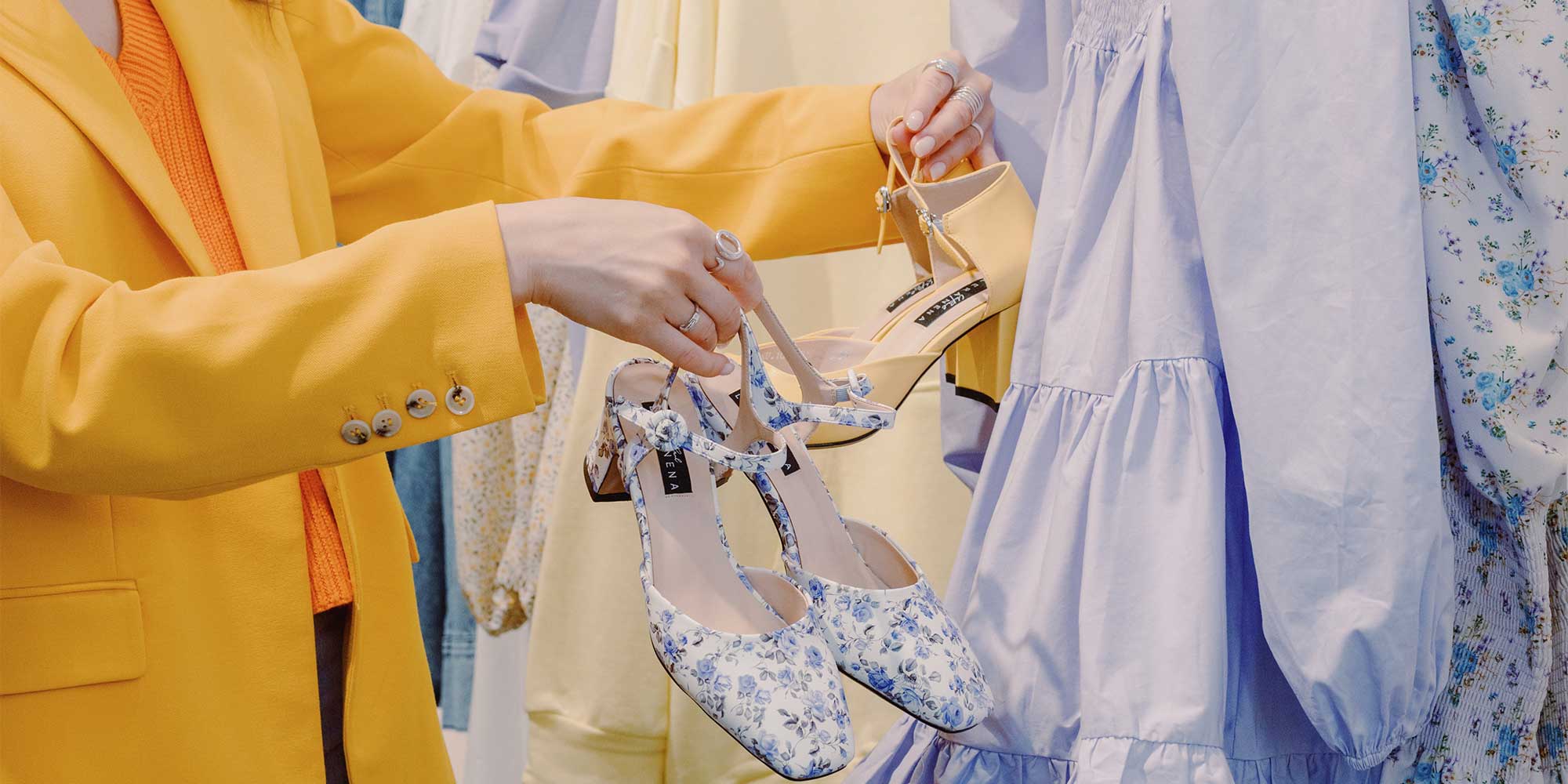
What yous can do to assistance
Consumers play a fundamental role in reducing waste in the style industry. From increased support for more sustainable models, we are seeing circularity seeping into supply chains, manufacturing, and at the final phase; after a consumer has finished with an particular.
Some primal actions y'all can have to align with circular manner and reduce waste in the manufacture:
- Know well-nigh the brands you buy by using resources such equally Good On Y'all
- Support sustainable and ethical fashion
- Live by the five R's of manner
- Shop second hand where possible or consider renting for your adjacent event
- Host and attend clothes swaps
- Ask "What are the alternatives?" earlier throwing away used clothing
Brands leading the way in environmental action
A lot needs to exist done. But nosotros have promise that those brands that are forward-thinking and environmentally sustainable will lead the way.
MUD Jeans

Dutch denim brand MUD Jeans is all near sustainability. Not only does it offer a repair service, but it too provides a rental service where yous can lease a pair of jeans for up to a yr. MUD Jeans uses a combination of GOTS certified organic cotton wool and mail service-consumer recycled cotton. MUD Jeans are bachelor in a range of sizes, usually from W25 L30-W33 L32 for women and W28 L34-W36 L34 for men.
Meet the rating.
Shop MUD Jeans.
Shop MUD Jeans @ Labell-D.
A.BCH

A.BCH is a Melbourne-based, Australian-made fashion label for individuals who care about garment provenance. It utilises renewable, organic, and recycled materials. Notice the range in sizes XS-Forty, or customise to fit yous.
Run into the rating.
Shop A.BCH.
OhSevenDays
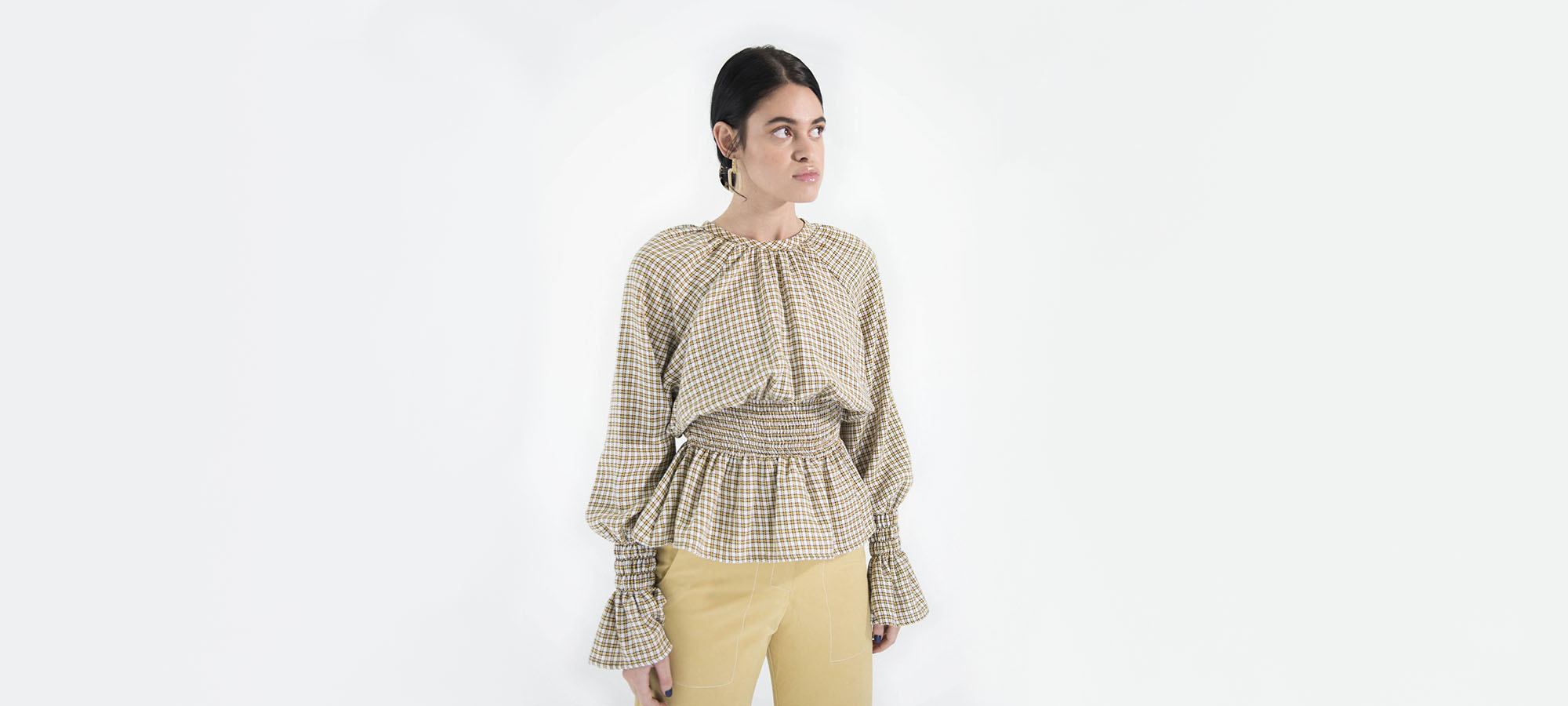
OhSevenDays was started past Australian-Canadian Megan Mummery to promote slow fashion and the "ability of circularity". Based in Istanbul, the make reclaims end-of-roll fabrics from the urban center's garment factories and creates abrupt, everyday womenswear that's as habiliment as it is ethical. Substantially, it makes dull fashion from fast fashion's leftovers. OhSevenDays' garments are available in sizes XS-Twoscore or custom sizing.
Encounter the rating.
Shop OhSevenDays.
Store OhSevenDays @ SlowCo.
Deadwood

Celebrating ageless rebellion and costless-spiritedness, Stockholm-based Deadwood creates recycled leather clothes, aiming to reinvent how nosotros remember near fashion. It recycles cut-offs created during the manufacturing process and traces suppliers in all of its supply chain. Find the garments in sizes XS-Twoscore.
Encounter the rating.
Store Deadwood @ Labell-D.
Shop Deadwood.
Funky Kalakar
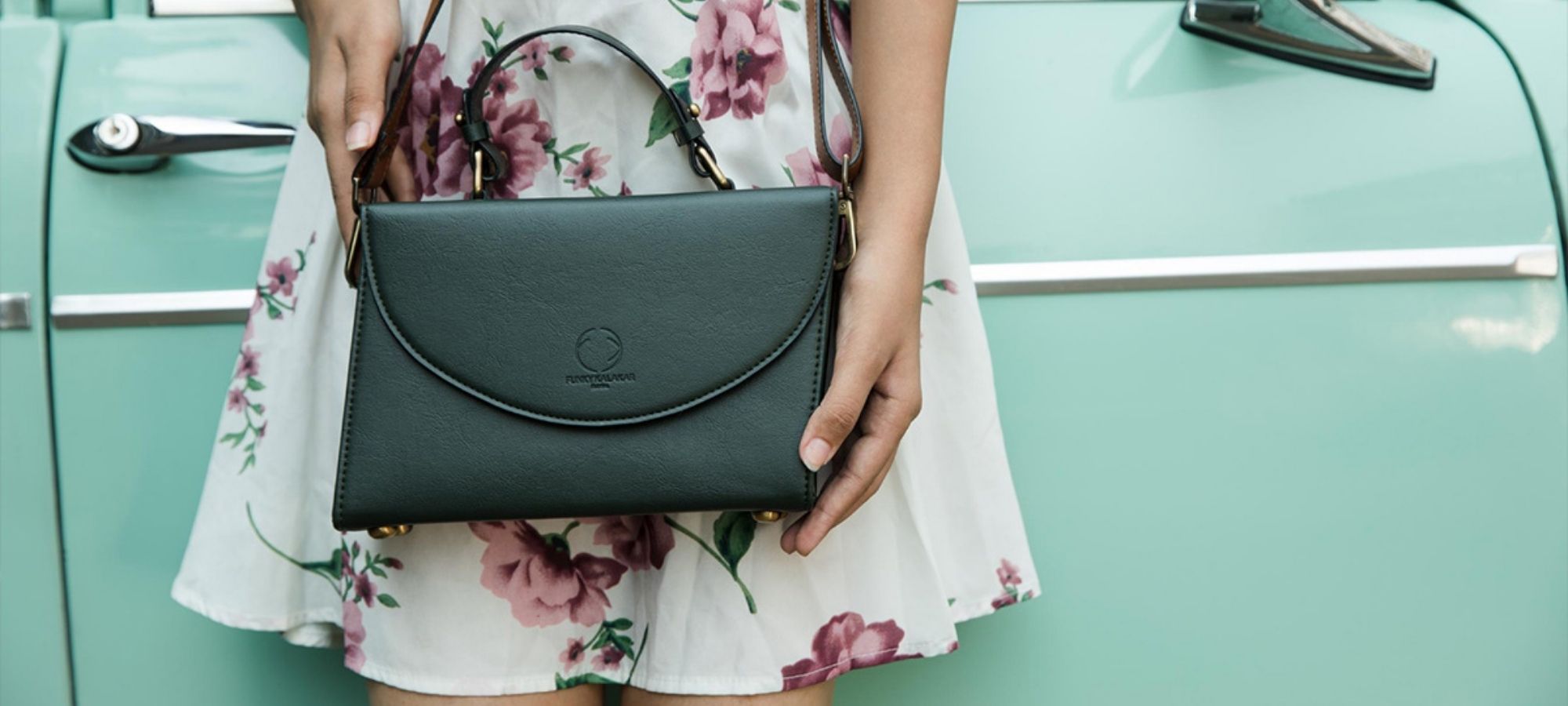
Funky Kalakar is an Indian make that brings alive the stories of ancient craft in the grade of contemporary vegan shoe and bag designs by handcrafting them using natural materials. Find its range of shoes in European union sizes 36-41.
See the rating.
Shop Funky Kalakar.
Malaika New York

Malaika New York is a minimalistic sustainable wear brand with a focus on goose egg waste matter wearable and accessories. The US-based brand aims to eliminate fashion's harmful environmental furnishings past utilizing minimal or naught waste patterns, while maximizing wearability by producing luxe-quality, gimmicky garments that brand a statement at present and into the time to come. Find virtually garments in Due south-XL with some items going upwards to 2XL.
See the rating.
Shop Mailaika New York.
The R Commonage

The R Collective'due south womenswear collections are fabricated by reusing rescued excess materials from leading luxury brands and reputable manufacturers. The brand uses a high-proportion of eco-friendly materials, which limits the amount of chemicals, water, and wastewater used in production. It also ensures the payment of a living wage in its supply chain. The garments are offered in 2 sizes: XS-S and G-L.
See the rating.
Shop The R Collective.
Shop The R Collective @ ourCommonplace.
Etiko
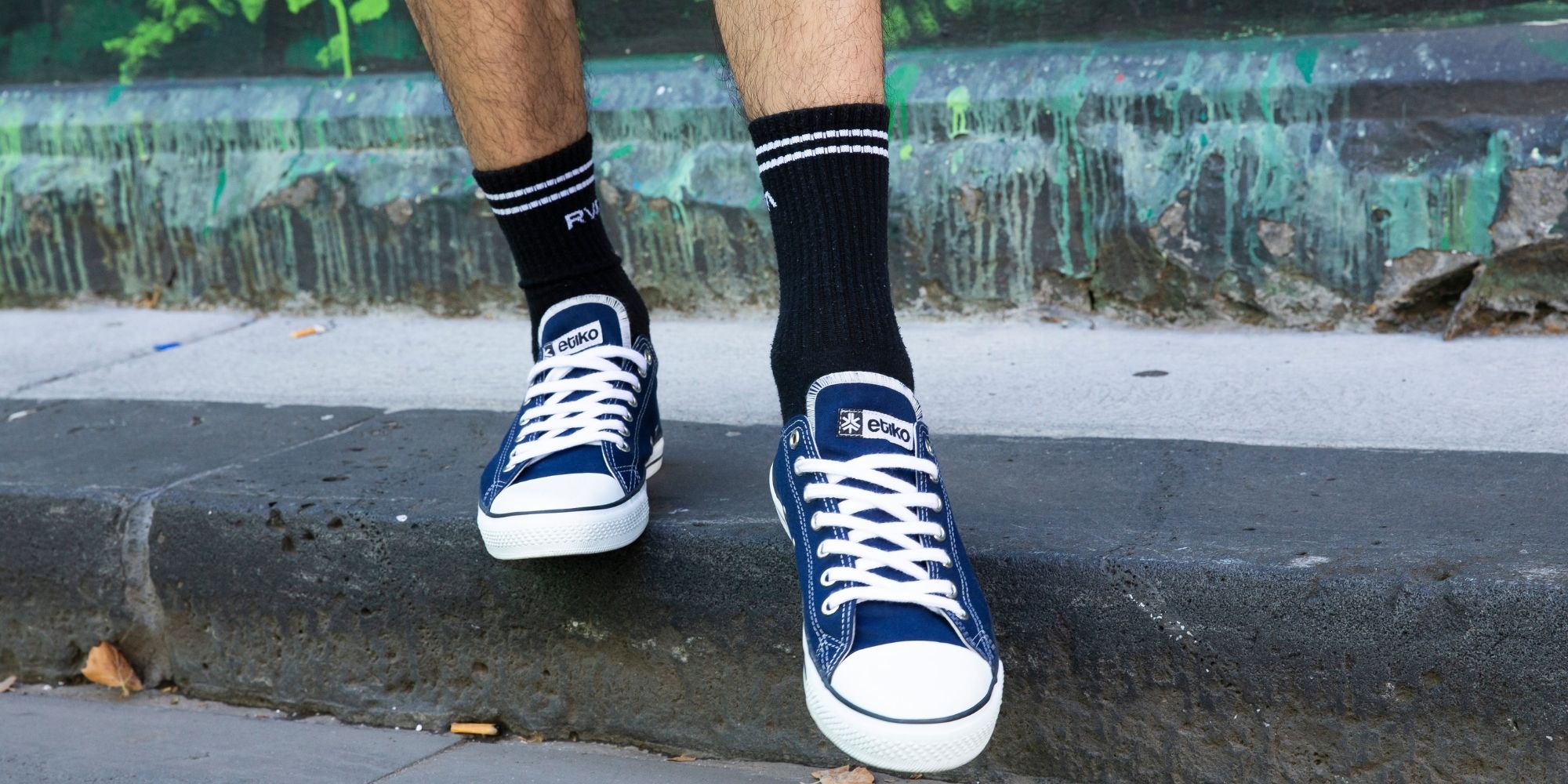
Etiko is an Australian designer of organic, eco-friendly, and fair trade clothing and shoes. The make constantly sets the bar for upholding and candidature the homo rights of people working in traditionally exploitative manufacture supply chains. Find the clothes in AU sizes 8-20, and the shoes in UK sizes 3-13.
See the rating.
Shop Etiko.
Rifò

Rifò is an Italian brand that combines circular economy, craftsmanship and sustainable fashion. The brand name is a Tuscan inflection from the verb "rifare" and it represents the way of speaking of the artisans who invented "Cenciaioli", a method of recycling onetime wearing apparel more than a hundred years ago. Observe most pieces in sizes XS to 2 XL.
Run into the rating.
Store Rifò.
KENT
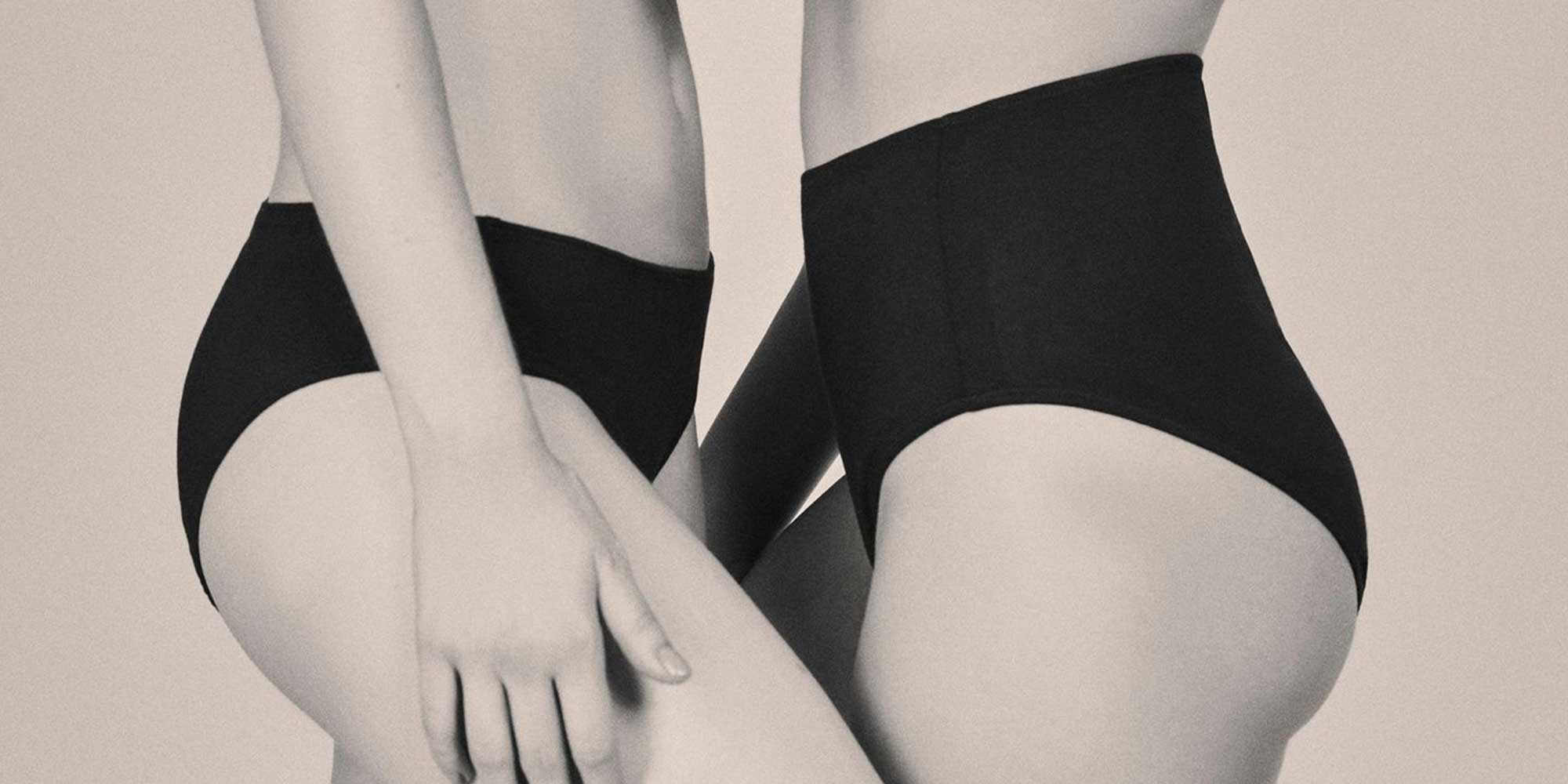
KENT is a US-based make that creates timeless organic underwear for women, ensuring a quality fit and feel no matter what. Information technology produces the first verified compostable underwear, made from organic cotton fiber and designed to return to nature in 90 days when composted or planted, feeding the soil and growing new plants (or hereafter pants). Discover most pants in sizes XS to 2XL.
See the rating.
Shop KENT.
Elvis & Kresse

Elvis & Kresse is a small-scale luxury brand doing great things. Information technology began in 2005 using reclaimed fire hoses, and now uses materials such as parachute silks, coffee sacks amongst other reclaimed materials. Later on the Burberry saga, Elvis & Kresse and Burberry formed a working partnership that has been transforming 120 tonnes of leather offcuts from Burberry into new products over the by 5 years. These are then sold by Elvis & Kresse. Burberry is rated equally "Information technology's A Start" and Elvis & Kresse as "Great".
See the rating.
Shop Elvis & Kresse.
Editor's note
This article was originally written by Charlotte Dark-brown in 2019, and was updated by Solene Rauturier in 2022.
Feature image via Unsplash, all other images via Pexels and brands mentioned. Good On You lot publishes the world'southward nigh comprehensive ratings of fashion brands' impact on people, the planet, and animals. We dearest to recommend some of the best sustainable brands, rated "Proficient" or "Great". We likewise encourage shopping pre-owned as another peachy way to reduce the impact of our fashion choices. Use our directory to search thousands of rated brands. We may earn a commission on sales with elevation-rated partners made using our offer codes or chapter links.
0 Response to "Why Do Some Cities Blow Up in the Fashion Industry"
Post a Comment